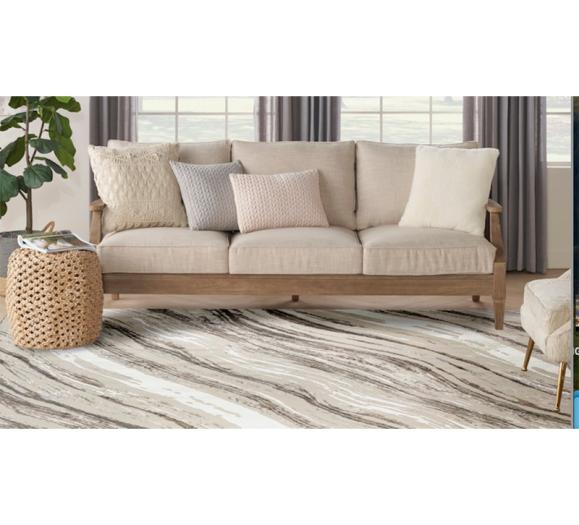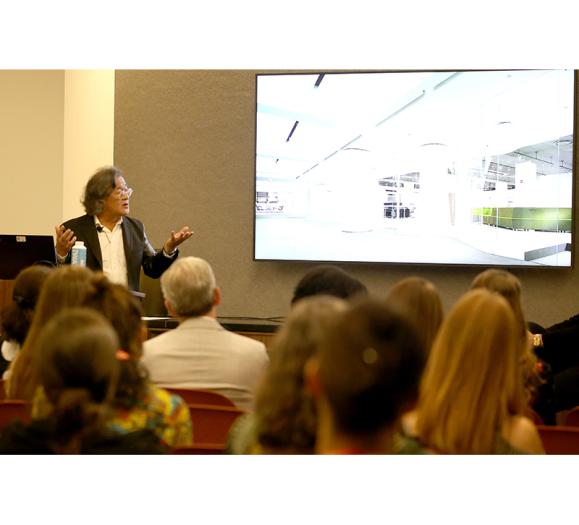There’s a changing of the guard taking place in all areas of the furniture business, fueled by a new generation of executives unfettered by family legacy and the “that’s the way we’ve always done it” attitudes of the past. Here, we celebrate the headliners and the upstarts, the dreamers and the creatives who are forging new paths, redefining our notions of luxury, design, manufacturing and, ultimately, connecting more effectively with today’s consumer.
Brad Cates
President and CEO, Curate Home
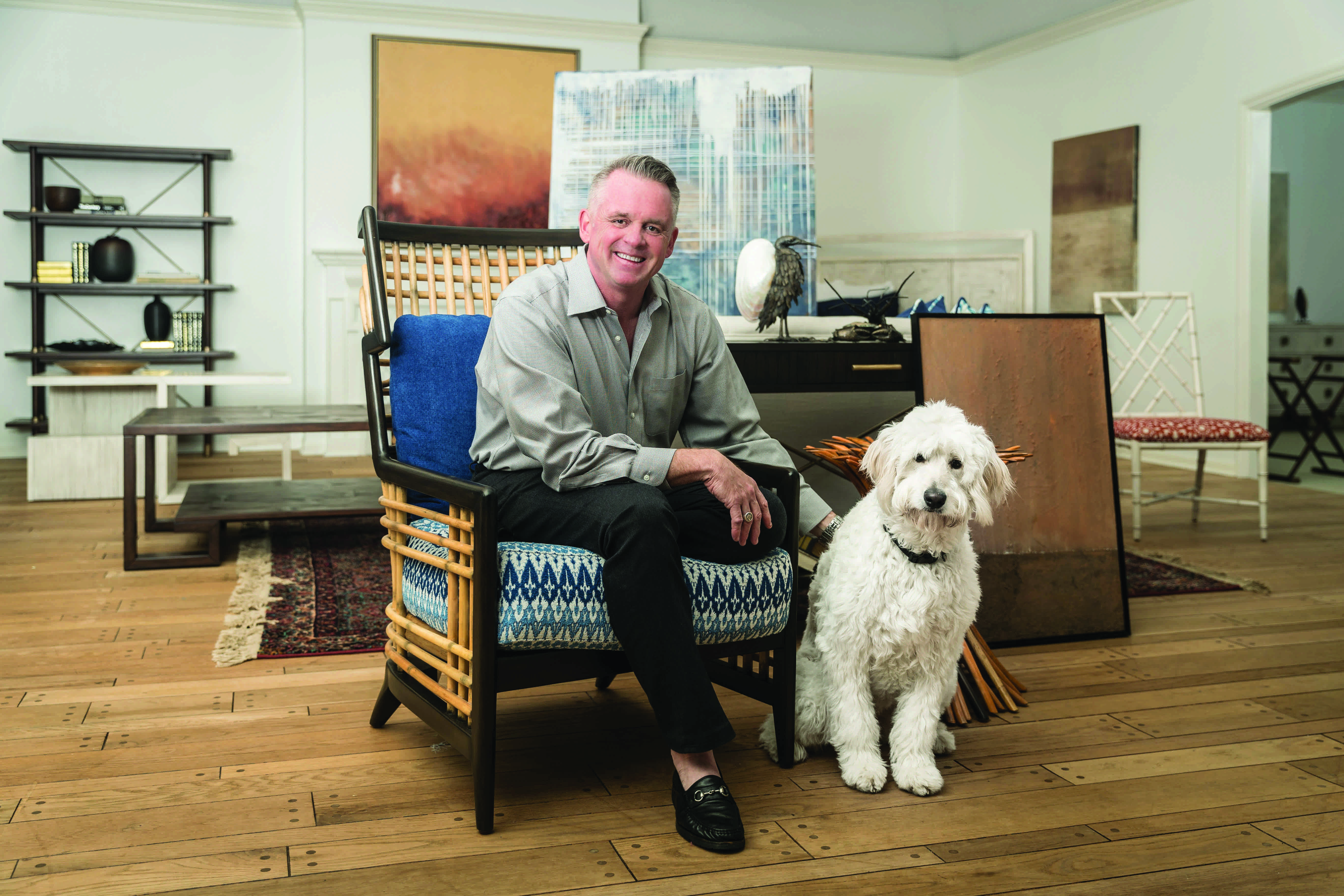
An industry veteran with a keen marketing mind, Brad Cates grew up in a furniture family and is known for noteworthy stints in trade publishing and high-profile sales and marketing gigs with marquee brands. Last fall, the executive took on the C-suite for the first time with the leadership of Curate Home, a luxury house with great product, sorely in need of operational change and a clear brand identity.
Owned by OEM manufacturers Pacific Traders & Manufacturing Corporation and Mehitabel, the company long supplied the most respected brands in the business with reed and rattan furnishings and virtually originated the mixed materials trend. Curate Home combines the best of the factory’s capabilities in a whole home brand created to stand on its own.
“There were a lot of hard decisions and personnel changes that had to be made in order to build Curate Home, and a lot of operational issues that I had not expected,” Cates reflects, adding that he considers his greatest accomplishment throughout the past year to be building the close-knit Curate Home team. “I’m blessed to be surrounded by multi-talented people. It’s definitely a high when your team gels and begins to work as a cohesive unit with a common vision,” he says.
“There really aren’t a lot of retailers out there selling products at our price points,” Cates relates, “but they do exist and if economic conditions hold, there will be more. [The company does a significant amount of business in the interior design trade as well.] The success of our business depends on exceeding the expectations of those select few in terms of style, price point, service and deliverability. We have to continue to accelerate because what was good today will barely be acceptable tomorrow.”
Toma Clark Haines
Founder and CEO, The Antiques Diva & Co.

Entrepreneur, writer, speaker, lifestyle consultant and global tastemaker Toma Clark Haines realized her dream to launch an eponymously named furniture collection this past market. “It’s something that everyone who works in the interior design industry wants to do; it’s like a fantasy,” she says.
Given the notoriety Haines has achieved as the Antiques Diva — the world’s largest antiques buying and touring services company — we can all be forgiven for expecting a line of antique reproductions. Instead, luxury furniture company Aidan Gray Home married French traditionalist and urban modernist style in mixed media looks using materials not available in the 18th century (think lucite and faux leather combined with hand-carved woods). “The idea was to pay homage to the past, while looking to the future,” says Randal Weeks, CEO at Aidan Gray.
Haines’s future is looking particularly golden due to a second, near-simultaneous product launch, TCH, her one-of-a-kind, handmade jewelry. In creating the semi-precious designs, she uses a local goldsmith in Venice known for his work for Elton John. It’s a long way from her roots on an Oklahoma ranch, where she cut up stacks of National Geographic magazines as a child. “Fascinated by travel and the jewelry on the long-necked tribeswomen on those pages, I’d cut out paper diamonds and glue them to myself,” she says.
There’s also a handbag line and she’s in the midst of pitching textiles. Her long-term goal is to launch an Antiques Diva television show. (Conversations are taking place). She’s also working on the outline for a book. Again, we’d all be forgiven if we assumed the pages would be devoted to the ins and outs of antiquing. “I’m actually really interested in writing a book for entrepreneurs,” she says.
Greg Curry
Director of Merchandising and Product Development, Spectra Home

How to lead during a time of change? Greg Curry didn’t have much time to think about it when he accepted a job as Marketing Manager for Spectra Home one year ago this month. The former owner of Engender Furniture, Curry had held a number of sales positions for major upholstered furniture companies over the years, but was unfamiliar with the manufacturer, the U.S. marketing arm of Hangzhou, China-based Shayne Global Holdings.
“I’m the guy who turns over the sofa cushions to see who made the product no matter where I am,” Curry says. “I always gravitate to the product before anything else, and when I first walked into Spectra’s old showroom in the C&D Building, all I saw was this gorgeous tufted, eight-way, hand-tied sofa sitting on a platform. I had been producing goods domestically that were not near the quality of that sofa, although our price points were not that different, and I was mesmerized. All I could think was, ‘How are they doing this for this price point?’”
In the midst of a merger with Palatial Furniture at the time, Curry quickly added merchandising and product development to his responsibilities, overseeing a showroom move to the Design District along the way. One year in, at the first market that truly bore his stamp, Spectra rolled out its largest new product offering ever, turning heads with sexy, Mid-Century Modern influences and urban transitional looks. Special order is now a universal capability throughout the entire line and Curry is focused on expanding the line’s visibility in the interior design community, as well as with independent retailers. “No one is delivering custom goods out of China within an eight to 10-week timeframe,” he says. “If we can improve that turnaround time, it will be very easy to do business with us.”
Amy Foster
Lead Buyer, The Showroom @ Furniture Row

One year after opening the doors to the 170,000-square-foot home furnishings wonderland known as The Showroom @ Furniture Row in Denver, Amy Foster is one week into the luxury home store’s first rug trunk show. “We had a hunch that it was something we really needed to do, and we brought in thousands of SKUs from vendors in New York and Dallas and lots of antique rugs and rare, one-of-a-kind, investment pieces. It’s been wildly successful and really exceeded our expectations.”
While most would assume that planning, merchandising, buying and maintaining a luxury goods store of this magnitude would be considered her greatest achievement in the past year, Foster says the high “has been establishing ourselves in the community. We’ve really had to prove ourselves to the design community and the luxury consumer.
“Among the smart moves, we brought in Gallery Director Victoria Hensen and became an active member of the ASID community. We’ve hosted accreditation courses and that’s really given us an opportunity to demonstrate how we can be a great partner for local design firms. We’re also pulling back the curtain for consumers. The average homeowner is inundated with design today, from the Internet to HGTV, Target and all the way up. But really being able to visualize and buy at retail what they see isn’t always that easy. Here, they can come in and work with a team of designers at no additional cost and that’s really establishing us as the go-to place for better quality goods.”
Mitchell Gold
Co-Founder, Chairman, Mitchell Gold+Bob Williams
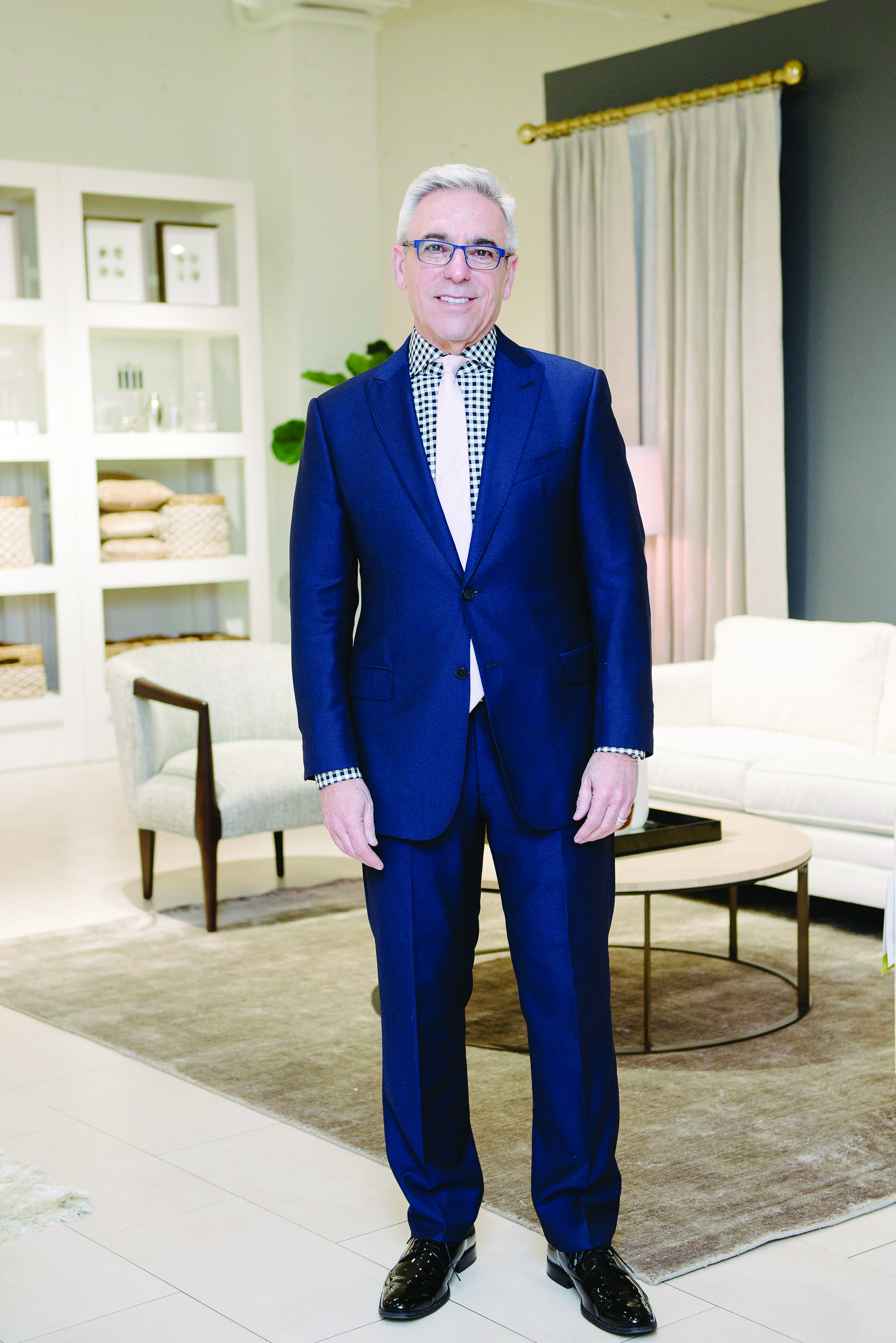
Mitchell Gold is fresh from the New York Cottages & Gardens annual Innovation in Design Awards where as Innovators of the Year, he and Bob Williams joined past honorees like Donna Karan, Martha Stewart and the late Mario Buatta. The manu-tailers were lauded not just for the success of their retail business, which now numbers 33 stores (there are more on the way), but for being driven to make social change.
“I’m not a super religious person, but I grew up in the Jewish faith tradition and there’s an expression called Tikkun Olam. And what it means is that part of your responsibility when you come into this world is to make the world a better place.” For Gold, who refers to himself as Chief People Officer, these days that means identifying and nurturing talent in the business. He points to the junior public relations manager who suggested that the company throw a Halloween party for the community. “I like to dip my fingers in everything, but I totally let her run with it, and we entertained 2,500 that night,” he says. “Watching her grow and make that happen was just extraordinary for me.”
Few in the industry missed the Washington Post feature earlier this year, detailing his work in and support of gay rights, and his personal mission to lobby religious groups to accept the LGBT community, particularly youth. “There’s enough turmoil that young people have to go through, without parents or the church making them feel broken because of how they were born,” he says. “I really feel strongly about educating people about the real harm they cause young people, and what I’ve learned in my time here in Taylorsville, NC, is that if you educate people about it, people do change.”
Any lingering controversy aside, Gold says he’s been well-received in the Taylorsville community from the beginning. “People want to work in a place that respects them, and we respect our employees and treat them fairly. In those years that other people were moving their production to China, we were determined to stay here, to become more efficient and to find ways to lower our margins. And to provide benefits like great healthcare and a daycare center while doing it, because a good brand is something that people can believe in and come to trust. I don’t have hard numbers on it, but anecdotally I know from talking to our shoppers that many have read about our daycare center, or our activism and our work with young people, and that’s why they decide to go out and find out what our stores are all about.”
Caroline Hipple
President, Norwalk Furniture
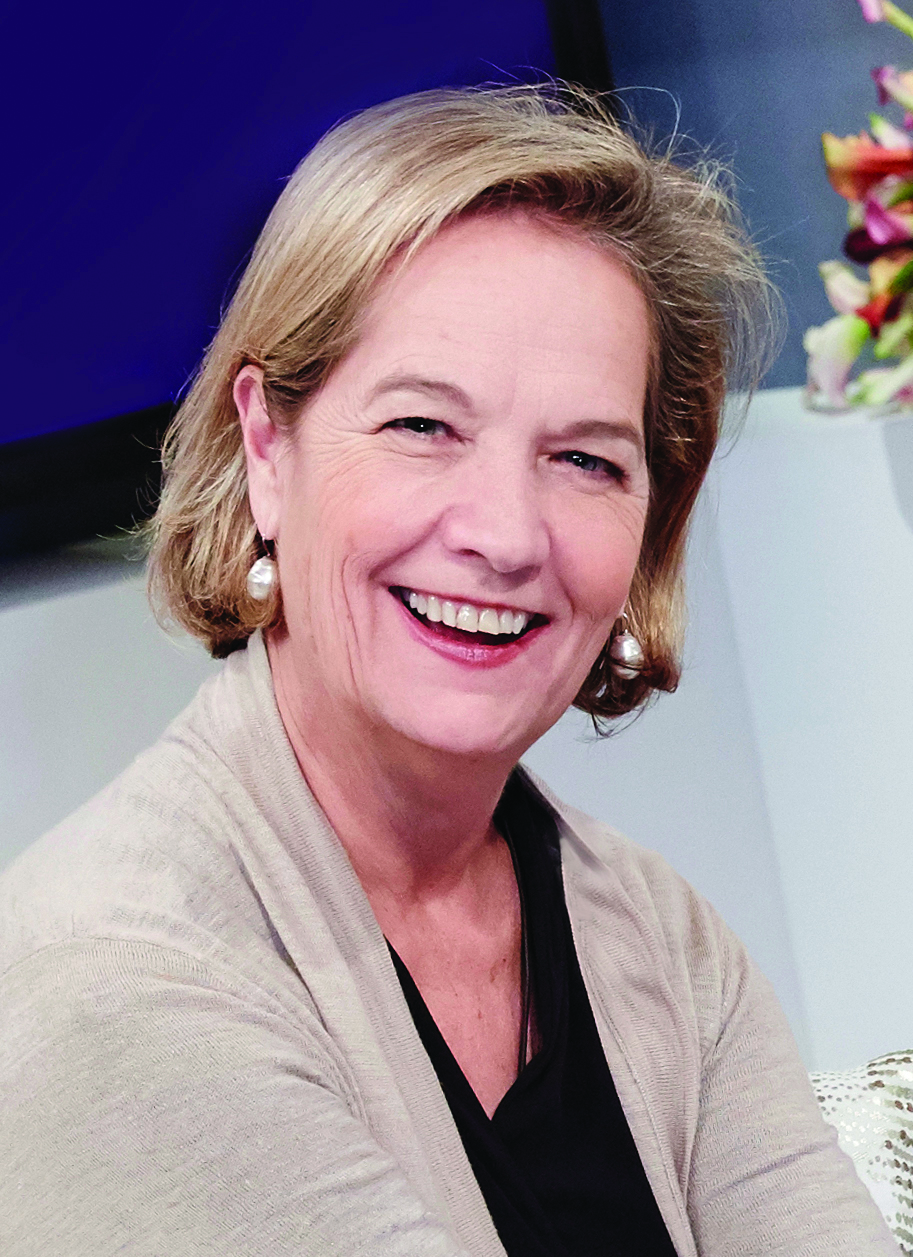
As a retailer, Caroline Hipple kept a close eye on Norwalk Furniture long before she became President of the company two-and-a-half years ago. “My impression was that Norwalk had an incredible capability to produce a lot of good, quality products with safe styling, and that in order to do business with them, you had to open a 10,000-square-foot, franchised store. Ten years after that last store closed, it’s amazing to me how many people still think that,” she says, chalking it up to the “powerful brand building” that results from having a sign on a store.
As a manufacturer, Norwalk Furniture is benefitting greatly from all its years in retail, having developed great empathy for retailers’ needs. Since Hipple’s been on board, the company has gained a reputation as a decorative resource with “the best damn fabric line in the category,” supported not only by the creative talents of Hipple and Chief Creative Officer Dixon Bartlett, but by savvy partnerships with fashion-forward lifestyle brands like Company C, and most recently, designer Kim Salmela, former Creative Director for Prince.
“We feel very confident in the work that we do every day, but sometimes, it’s nice to go out to dinner and try somebody else’s recipe,” she says. “We loved Christine Chapin’s colorful lifestyle and sensibility at Company C, and we’ve followed Kim since the Hotel Maison days. We coveted her fabric choices and have always admired her sort of bohemian, mish-mash of Los Angeles, the Midwest, West Coast and European vibe.”
At market, where Norwalk unrolled its largest introduction ever, Hipple described the reaction as “frothy. There were fabric swatches flung over every sofa and it was really, really powerful to see people using Norwalk as their toolkit, using the depth and breadth of the product and fabrics to achieve their goals. We always want to lead and inspire with trend and color and pattern, but we want to leave enough room for the retailer or designer to see their projects within that.”
Shannon Lookabill
Furniture Designer, Warren and Associates

Born in High Point, NC, furniture designer Shannon Lookabill grew up in the furniture business and has been attending the High Point Market since middle school whether he wanted to or not. “My mom has an interior design background, and my stepfather owned a small custom furniture business. A neighbor of furniture designer John Black at one time, he had some blueprints of Black’s work that he would roll out for me in our basement.” Lookabill would later be hired for an internship with Black prior to graduating from Kendall College of Art and Design. “I saw him as a legend when I was growing up, so it all kind of came full circle.”
Following graduation, the young designer signed on with Warren and Associates, where he has built a reputation over the past two decades alongside designers Andrea Otto and Mike Warren on major projects for companies like Stanley Furniture, Sligh, LaBarge, Marge Carson, Hekman, MacKenzie-Dow and Universal Furniture. This market, he walked away with the Pinnacle, the industry award which promotes design quality and encourages the recognition of furniture designers with the retail home furnishings industry, for the Paradox Bed by Universal Furniture. It was his sixth. He has been nominated for the coveted award 18 times.
Based in Grand Rapids, MI, Lookabill visits Asia every six weeks on average and much of his design aesthetic is influenced by his travel. “That’s been the biggest change for me over the years. It used to be that the clients were located in North Carolina or Virginia, or even in Michigan, and you could just hop on a plane to meet with them and be back home the next day. That just isn’t possible anymore. I’m fortunate though to have the opportunity to travel with a great group of clients and designers. That makes the trips a lot easier.”
Catina Roscoe
Furniture Designer, Catina Unlimited Design
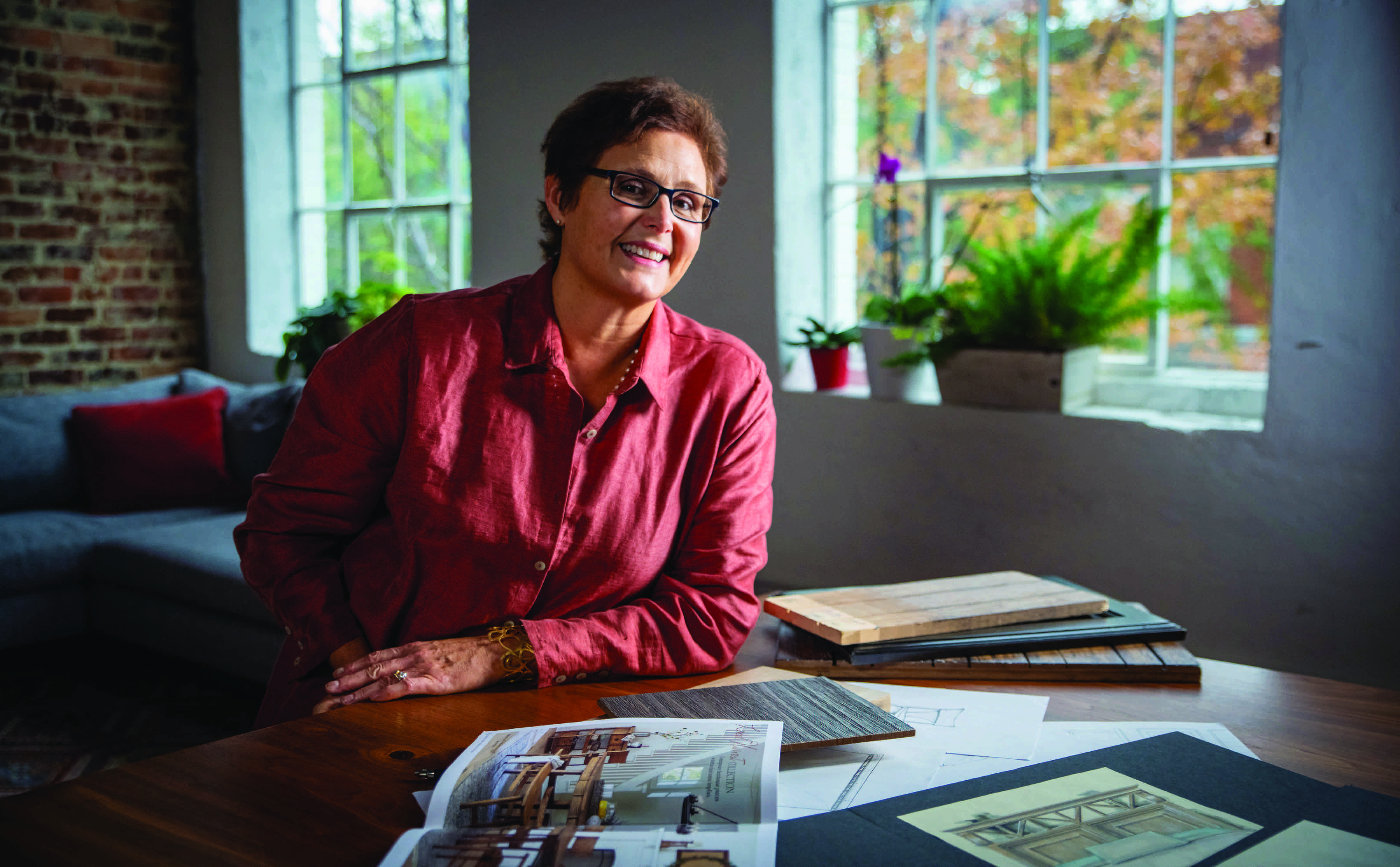
Catina Roscoe has been nominated six times in her career for Pinnacle Awards. She’s won twice, most recently, at the 23rd annual gala this past market. What makes the win in the casual dining category particularly notable is that her design was created for Borkholder Furniture, long known as a solid wood casegoods purveyor with Amish roots.
Though long celebrated for its quality, Amish furniture has not typically made in-roads beyond largely traditional styles. That all began to change four years ago, however, when the Borkholder team decided to marry the company’s talented Amish craftspeople with world-class furniture designers. Sleek, sophisticated and clean-lined, a Roscoe design for Borkholder Furniture was nominated for the first time last year. This time she won, exclaiming, “This proves the Amish can build anything!”
The victory is all the sweeter because these were the first Pinnacles staged by the newly re-branded International Society of Furniture Designers, with Roscoe serving as President. One of the few women to ever lead the organization, she has spearheaded transformational change during the past two years, driven by the belief that the significance and value creative design brings to the industry — and specifically the people behind it — should be recognized and celebrated.
Alex Shuford
Chief Executive Officer, Rock House Farms Family of Brands

The industry breathed a collective sigh of relief when news hit that RHF Investments had closed on its purchase of Hickory Chair, Maitland-Smith, Pearson and LaBarge furniture brands from Heritage Home Group. With the exception of a few furniture historians, what most probably don’t realize is that the history of Century and Hickory Chair were intertwined years ago.
“One of the original investors in Hickory Chair in 1911 was a Shuford family member and actually appears on the company’s founding document,” recounts Alex Shuford, CEO at Rock House Farms Family of Brands. “Over the years the investment was disposed of, and then my grandfather and two of his friends actually bought Hickory Chair and Hickory Manufacturing from a group of New York investors who planned to liquidate the inventory. As the story goes, my grandfather and his friends met the New Yorkers at the train station in Hickory, pulled them aside and said, ‘We will pay you a quarter million dollars more than you have already paid to sell the company back to us, get back on the train and go back to New York.’ They did, and my grandfather and his partners went back to their parlor and divvied up the companies.”
Unfortunately, Shuford’s family did not walk away with Hickory Chair in that division, but Shuford himself is quite happy to bring the story full circle. “We’ve had a very polite and cordial competition with them over the years, and there are a lot of people here at Century that used to work at Hickory Chair and vice versa. So, it’s been a good and positive entanglement over the years that’s finally been consummated.”
This accomplished, Shuford is turning his attention to other pressing issues like tariffs and protecting the disappearing habitats of the most precious resource: upper-end retailers. Even to the point of “working across the aisle with competitors that have common linkages to bring retailers together where they communicate with each other. These are our spotted owls,” he says, “and we have to work together so they can stabilize, if not thrive, in the future.”
Michel Smith Boyd
Interior Designer, Star of Bravo’s Buying It Blind, Michel Smith Boyd Interiors
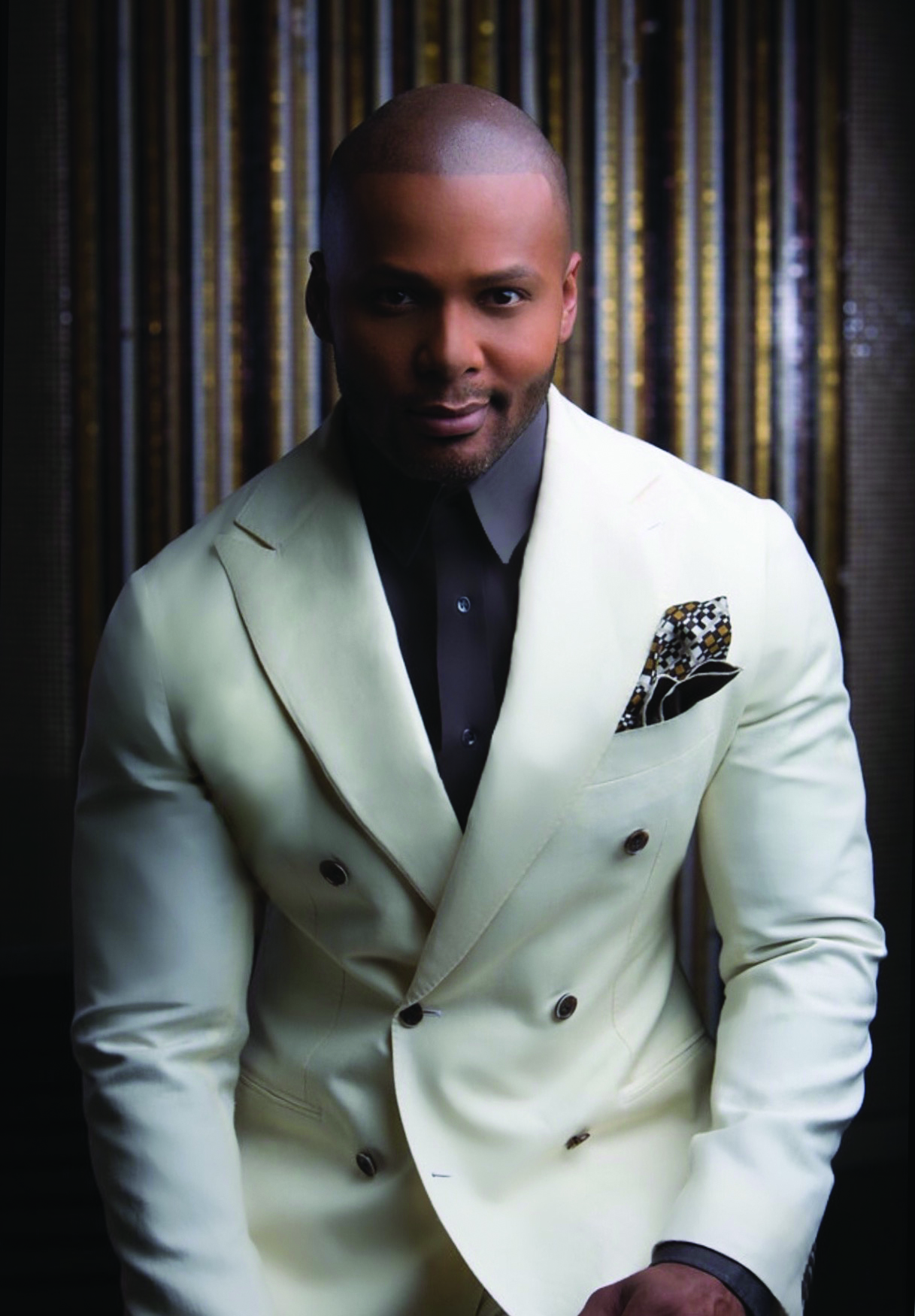
He may currently be known as one of Atlanta’s top interior designers, but the rest of the country is fast getting to know Michel Smith Boyd thanks to the debut of “Buying It Blind.” The new series on Bravo follows home buyers who purchase residences sight unseen, hoping the pros (Boyd among them) can transform their properties into their dream homes through a series of renovations (Fridays at 8/7c).
It’s not the first time the designer has been approached for such a project, having turned down multiple offers to do television over the years. “It was always some producer making me out to be a flaming queen, and I’m never going to be that guy. But this is about raising my visibility and platform because until now there have been no black male experts delivering expert advice on the network.”
Indeed, it’s important to Boyd that young people of color are exposed to all the opportunities available to them today. “Growing up, I wasn’t interested in sports, and creativity really wasn’t celebrated in my family. I did very well academically, but that was really to distract everybody. I loved all things beautiful, but I didn’t even know what an interior designer was; I’d never even heard the term.”
He flirted with merchandising, modeling and cosmetology before finally enrolling in design school at the age of 26. His portfolio of residential and commercial projects has virtually exploded ever since with glamorous and sophisticated projects featured everywhere from Elle Decor to Vogue. “I got into design because I wanted to make a real contribution and deliver the magic,” he says. These days, when he’s not painting or throwing pots, he’s busy designing and expanding his licensed product offering of luxe rugs, fabrics and trims, wallcoverings and home accessories and shooting his show.
Adam Tilley
President, Stanley Furniture

As the fall 2018 market dawned, Adam Tilley relates there was a moment when he felt like Lt. Dan, shouting at the heavens from the rigging of a shrimp boat.
“We’d done two years’ worth of work in six months, and we were bringing out seven new collections. Just days before the show we learned that one collection didn’t make it onto the boat out of Vietnam. We put it in the air and sent a driver to Atlanta to meet the plane. Then the hurricane hit. Turned out, only some of the pieces had landed, and the rest were sitting on another plane in a ground stop at O’Hare. He drove back to High Point, unloaded what he had and turned right around and drove back to Atlanta to retrieve the rest. Then our power went. We didn’t yet realize that the base for the collection’s dining room table was missing altogether. We ended up taking apart an occasional table and used cardboard to prop the table up to the right height. I was like, ‘Come on! You call this a storm? You’ll never sink this boat!’”
The table base was discovered disguised in a box marked “chair,” and the display was repaired before any sharp-eyed showroom visitors caught on. And yes, the table sold, as did all the other new products the company unveiled this fall. “Sales per SKU were up 75 percent over prior markets, and across the board, metrics were up by triple digits,” says Tilley, who is just nine months into his new role as President. Tasked with developing product the majority of his career, and now charged with the bottom line for the first time, he believes the nearly century-old company is just getting started. “We have to re-build the foundation of the business with a stable of salable product that resonates with growing distribution channels. We’ve got a great management team in place, a great sales force and now great product. We just need to ship on time and this thing could turn around really quickly. At the end of the day, exchanging furniture for money as often as possible is pretty much the strategy.”




